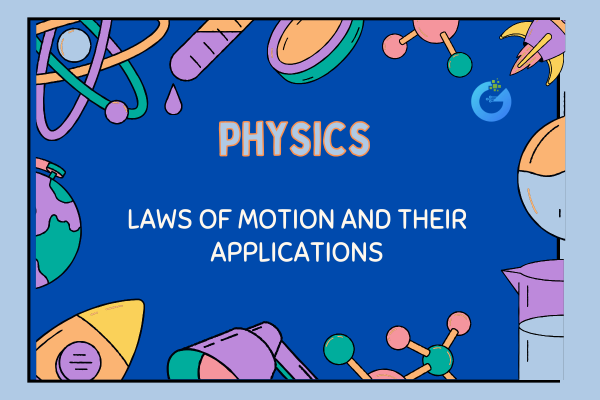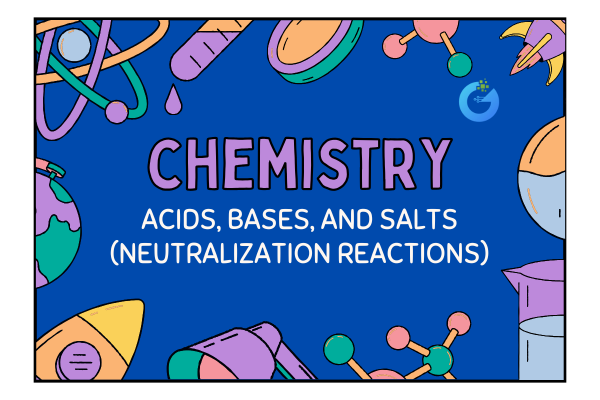Introduction: Why Do Things Move or Stop?
Have you ever noticed how you lean forward when a bus brakes suddenly? Or why it takes more effort to push a full shopping cart than an empty one?
These everyday experiences are not just random—they follow natural laws of motion. These laws were first described by the legendary scientist Sir Isaac Newton, and they’re so important that they form the foundation of all physics related to movement.
In this chapter, we’ll break down:
- Newton’s three laws
- The role of force, inertia, and momentum
- Real-world examples you see around you
- Simple formulas to understand how motion works
expert-led Physics classes – visit our website to learn more
Newton’s Three Laws of Motion
Newton’s laws explain how objects start moving, keep moving, or stop. Each law focuses on a different part of motion. Let’s go step-by-step.
First Law: Law of Inertia
Statement:
An object at rest stays at rest, and an object in motion stays in motion at constant speed in a straight line unless acted upon by an external unbalanced force.
This means:
- Things don’t move unless pushed or pulled.
- Things don’t stop moving unless something like friction or a barrier slows them down.
This law is also called the Law of Inertia.
Real-Life Examples:
- A soccer ball doesn’t roll on its own—you have to kick it.
- You jerk forward when a bus halts suddenly because your body wants to stay in motion.
- A book on a table stays still unless you push it.
What Is Inertia?
Inertia is the natural tendency of an object to resist any change in its motion.
- More mass = more inertia
- That’s why it’s harder to push a heavy suitcase than a light one.
Second Law: Force = Mass × Acceleration (F = m × a)
Statement:
The force applied on an object is directly proportional to the acceleration it produces, and depends on its mass.
Formula:
F = m × a
Where:
- F = Force (in newtons, N)
- m = Mass (kg)
- a = Acceleration (m/s²)
Real-Life Examples:
- A loaded cart is harder to push than an empty one.
- A light football accelerates more when kicked compared to a heavy medicine ball.
- Two people pushing with the same force—lighter object moves faster.
Third Law: Action and Reaction Are Equal and Opposite
Statement:
For every action, there is an equal and opposite reaction.
This law is everywhere—though we don’t always notice it.
Real-Life Examples:
- You push on the ground when jumping—and the ground pushes you up.
- A balloon flies around when you let go of it—the air rushes out in one direction, balloon moves in the other.
- A rocket pushes gases down; gases push the rocket up.
Key Physics Concepts Linked to Newton’s Laws
What Is Force?
A force is simply a push or pull. It can:
- Change an object’s motion
- Change its direction
- Even change its shape
Balanced vs Unbalanced Forces
| Force Type | Result |
| Balanced Force | No change in motion; object stays still or moves at constant speed |
| Unbalanced Force | Causes acceleration or deceleration |
Example:
- Pushing a door with equal force from both sides = balanced (no movement)
- Pushing harder from one side = unbalanced (door opens)
What Is Momentum?
Momentum (p) is the measure of how much motion an object has.
Formula:
p = m × v
Where:
- p = momentum
- m = mass
- v = velocity
Heavier and faster = more momentum
Law of Conservation of Momentum
Statement:
When no external force acts, the total momentum of two objects before and after a collision remains the same.
Example:
- Two skaters push off each other—one moves forward, the other backward.
- A gun recoils when a bullet is fired.
Applications of Newton’s Laws in Daily Life
| Real-Life Situation | Law Involved |
| Wearing seatbelts in a moving car | Newton’s First Law |
| Kicking a football harder | Newton’s Second Law |
| Rocket launching | Newton’s Third Law |
| A swimming stroke pushes water back | Newton’s Third Law |
| Pulling a heavy suitcase | Newton’s Second Law |
Core Concepts Table
| Term | Meaning |
| Inertia | Resistance to change in motion |
| Force | Push or pull that causes motion or stops it |
| Acceleration | Change in speed or direction of an object |
| Momentum | Measure of motion (mass × velocity) |
| Newton’s Laws | Three laws explaining how force and motion are related |
| Action-Reaction | For every action force, there is an equal and opposite reaction |
Frequently Asked Questions
Q1. Why does a car stop even if no brake is applied?
Because of friction and air resistance—both are external unbalanced forces.
Q2. Why do you fall forward when a moving vehicle stops suddenly?
Due to inertia—your body wants to keep moving even when the vehicle stops.
Q3. What is the SI unit of force?
Newton (N)
Q4. Why does a heavier object require more force to accelerate?
According to F = m × a, more mass = more force needed.
Q5. How do rockets work?
Rockets push gases downward (action), and the gases push the rocket up (reaction).
Fun Facts
- Newton was only 23 when he started thinking about gravity and motion.
- The International Space Station floats because it’s in free fall—just like Newton’s laws predict!
- When you hit a cricket ball, you apply Newton’s Second Law.
- If there were no air resistance, a feather and a hammer would fall at the same speed—this was tested on the moon!
Conclusion
Newton’s Laws of Motion aren’t just for scientists or astronauts—they’re the rules that explain everything that moves, stops, or collides around you.
From a bicycle ride to a space shuttle launch, these laws help us understand how the universe behaves.
Next time you’re in a car, on a swing, or kicking a football—pause and ask: “Which of Newton’s laws is at work here?”








